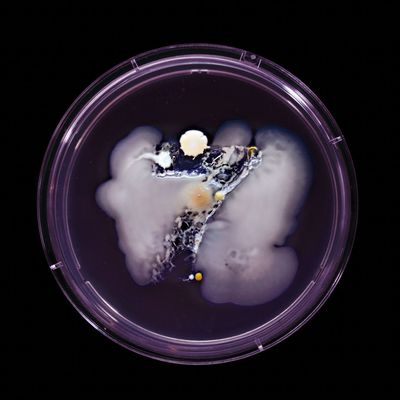
The project began one day last year when Craig Ward saw a fellow photographer’s image of bacteria cultured from her son’s handprint. When he next hopped on the subway, “It reminded me of that urban myth: When you hold on to the subway railings, you shake hands with 100 people all at once,” says the 34-year-old Brooklyn artist. Before long, Ward was riding all 22 lines with a bag of sterile sponges, swabbing the handrails and plastic seats. “As soon as you start taking out scientific equipment and petri dishes, people did start to look a bit,” he says. “But no one really challenged me. You can get away with most things on the subway.” Back at his studio, each sample was used to form the subway line’s name on a petri dish filled with agar — the jellylike substance that feeds bacteria — and cultivated through a warm summer. For Ward’s portraits of these little swarming families, the petri dishes are lit to match the subway line: the 7 in violet, the G in green. They are alive and alien all at once.
The railings (unsurprisingly) yielded the most dramatic results. Not every colony can be named, but Ward was able to ID quite a few microorganisms by shape and color. Many are the benign everyday bacteria found in saliva and sweat and skin. Others are more sinister — Ward found E. coli and a few strains of staphylococcus, plus (inevitably) a bunch of mold. Some viewers “might just recoil and say it’s gross,” admits Ward. “But this is a portrait of New York. That day, that time.”
A Guide
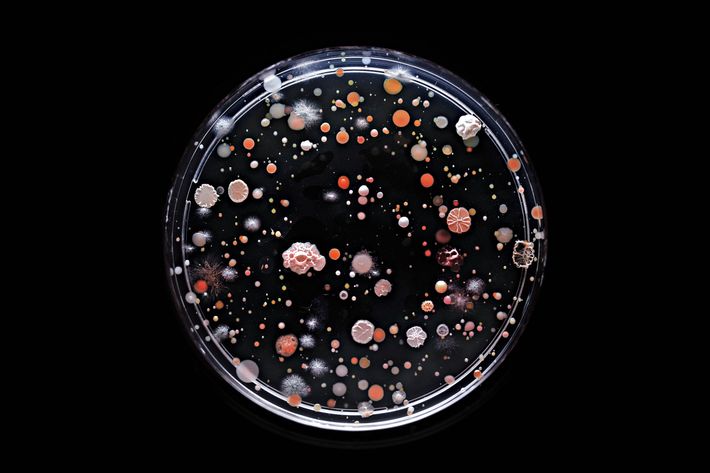
E. coli
Pink and red blotches. Found in feces; some types cause gastroenteritis or urinary-tract infections.
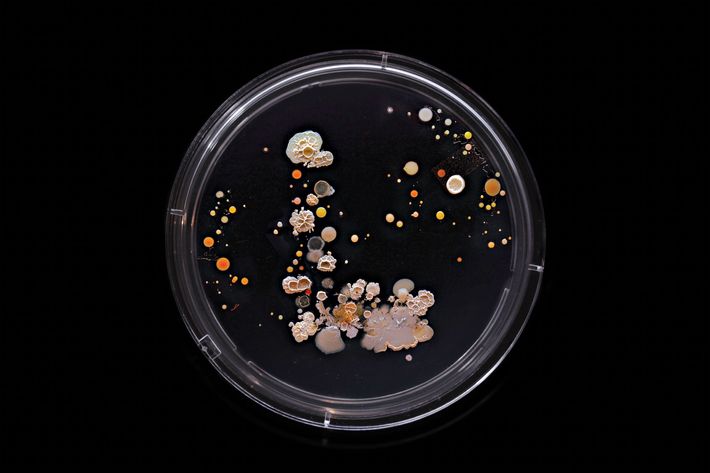
Proteus mirabilis
Clear to light-orange colonies. Causes kidney stones, infections.
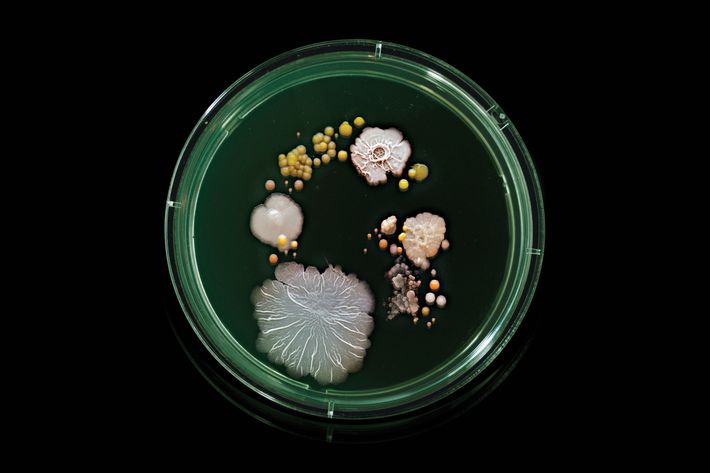
Salmonella
Beige colonies. Causes serious digestive upset.
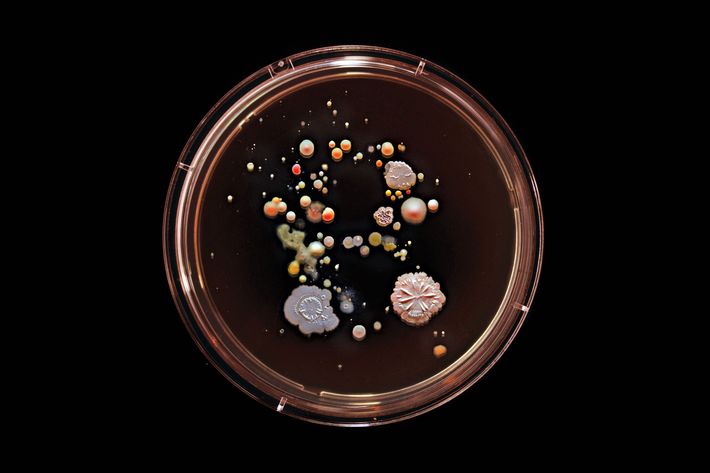
Staphylococcus aureus
White to light-yellow colonies; some may appear mauve. Causes skin infections, sinusitis, and food poisoning.
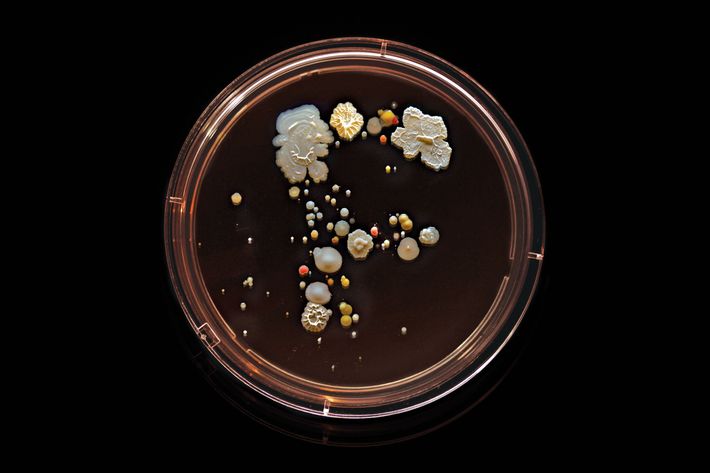
Micrococcus luteus
Bright-yellow colonies. Normal component of saliva and sweat; harmless.
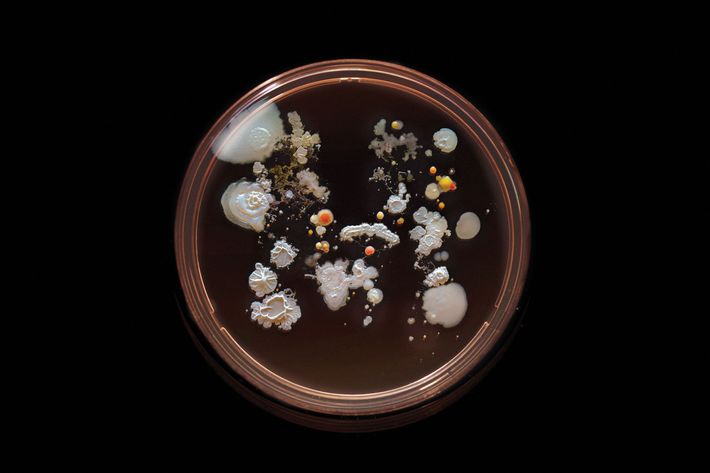
Bacillus subtilis
White, spread out like flat cauliflower florets. Found in soil and the gastrointestinal tract of humans. Non-harmful, possibly beneficial; has been used as an alternative antibiotic.
Serratia marcescens
Red and pink dots. Often seen as bathroom slime. A leading cause of hospital-acquired infections.
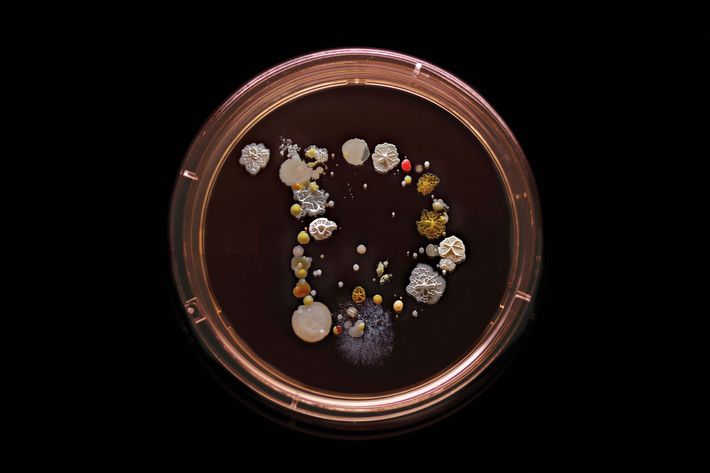
Mold
Big fuzzy blobs of it.
*This article appears in the November 16, 2015 issue of New York Magazine.





























